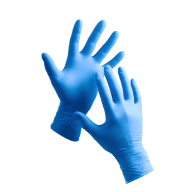Franklin Black SB E P FO SRC Low-Cut Shoes
4.7 / 5
Product description
Professional safety footwear designed specifically for electricians, featuring 100% metal-free construction with high electrical resistance properties. The shoe incorporates advanced materials including AIRFREEDOM fabric for superior breathability, non-metallic TOP RETURN toe cap with 200J impact resistance, and APT PLUS zero-perforation midsole plate. The polyurethane/TPU sole with recycled rubber granules provides durability while maintaining electrical safety standards.
Product Features:
- 100% metal-free construction for electrical safety
- Non-metallic TOP RETURN toe cap resistant to 200J
- Non-metallic APT PLUS midsole plate with zero perforation and high electrical resistance
- Anti-torsion support system
- Abrasion resistant leather toe cap protection
Technical Details:
- Upper: High tenacity AIRFREEDOM fabric nylon and MICROTECH
- External lining: AIRFREEDOM fabric
- Internal lining: 100% polyamide fabric, ladder-proof, breathable, moisture-absorbing and releasing, abrasion resistant
- Insole: EVANIT made of EVA and nitrile compound, thermoformed, anatomic, punched and coated with breathable fabric
- Sole: Polyurethane/TPU with recycled rubber granules and high electrical resistance
Recommended Applications:
- Footwear for electricians
Standards:
- EN ISO 20345:2022
- DGUV 112-191
About Low Safety Shoe
Low Safety Shoes provide essential foot protection while offering greater mobility than traditional work boots. These below-ankle designs feature protective toe caps, slip-resistant soles, and durable construction for workplace safety. Ideal for warehouse, manufacturing, and light industrial environments where comfort and protection are equally important.
- Impact Resistance
- Electrical Protection
- Slip Resistant
Standards and labels
Cofra delivery terms
Free delivery when you order more than 150,00 € from Cofra
Supplier shipping fee 5,00 €
Brand minimum 0,00 €
Price available on request
Shipping fee is 5,00 € for orders under 150,00 €
Sold in units of one pair




